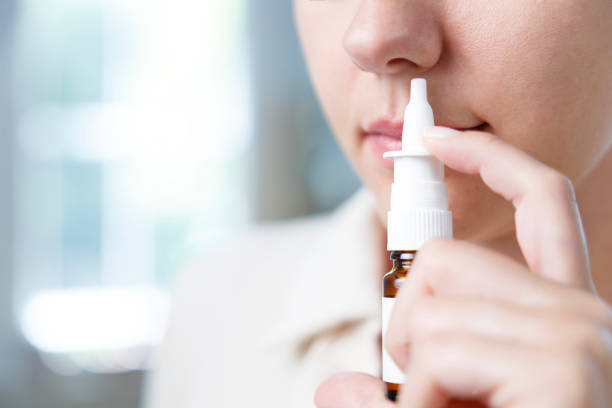USP Pump Priming and Repriming Testing
The United States Pharmacopeia (USP) pump priming and repriming tests are critical procedures for ensuring the proper performance of delivery devices used in inhalation and nasal products. These tests evaluate how well a device can deliver medication accurately, especially in challenging conditions like low-flow environments or high viscosity formulations.
The significance of these tests cannot be overstated given the precision required in pharmaceutical product development and regulation. The USP standards are widely accepted across the globe for ensuring drug products meet safety and efficacy requirements. In this context, pump priming refers to the process of filling a device with medication, while repriming involves refilling after some use. Both tests are crucial for verifying that devices function consistently over time.
The primary goal of these tests is to ensure reliability under various conditions. For instance, in inhalation devices, the accuracy of dose delivery can be affected by factors such as temperature fluctuations or wear and tear on the pump mechanism. Similarly, nasal sprays must maintain consistent dosing regardless of how many times they have been used. Ensuring that pumps function correctly during priming and repriming is essential for patient safety and compliance with regulatory standards.
Given the complexity involved in these tests, it's important to understand the detailed process from start to finish. Priming involves filling the device reservoir or chamber with medication according to specified volumes and pressures defined by USP guidelines. After priming, repriming follows immediately if the device has been used before. This step ensures that any changes in performance due to previous usage are accounted for.
The USP specifies strict criteria for acceptance based on flow rates, volume measurements, and pressure differentials at various stages of the test. These parameters help determine whether a pump can deliver medication accurately under specified conditions. Compliance with these standards is vital not only for ensuring product quality but also for maintaining regulatory approval.
Understanding the broader implications of this testing provides valuable insights into its importance within the pharmaceutical industry. By adhering to USP guidelines, manufacturers can demonstrate their commitment to producing high-quality products that meet stringent safety and effectiveness criteria. This approach fosters trust among consumers who rely on these medications for treatment.
| Test Parameter | Description | USP Requirement |
|---|---|---|
| Flow Rate | The rate at which medication passes through the pump. | Must meet specified upper and lower limits for accuracy. |
| Volume Measurement | The amount of medication delivered per unit time. | Accurate to within ±2% of nominal volume. |
| Pressure Differential | The difference in pressure between the inlet and outlet of the pump. | Must remain stable throughout testing. |
Why It Matters
Ensuring accurate dose delivery is paramount in pharmaceutical products, particularly those intended for inhalation or nasal use. In these cases, even slight deviations from prescribed dosages can lead to ineffective treatments or adverse reactions.
The USP pump priming and repriming tests play a vital role in addressing this critical need by simulating real-world conditions under which devices might be used. This includes low flow rates typical of certain patient groups, such as elderly individuals or those with respiratory issues. By conducting these tests rigorously, manufacturers can identify potential performance issues early on, allowing for necessary adjustments before products reach the market.
The stakes are particularly high when considering that many patients depend on inhalers and nasal sprays for essential medical care. Ensuring consistent and reliable function is not just a matter of quality but also one of life-and-death importance. Regulatory bodies like the USP set stringent standards to protect public health, making comprehensive testing an indispensable part of the production process.
- Ensures accurate dose delivery
- Identifies potential performance issues early
- Protects public health by upholding safety and efficacy standards
- Aids in maintaining regulatory compliance
- Safeguards patient well-being through consistent product reliability
Scope and Methodology
The USP pump priming and repriming tests encompass a series of detailed procedures designed to assess the performance characteristics of inhalation and nasal delivery devices. These tests are conducted in controlled laboratory environments where precise conditions can be maintained, ensuring reliable results.
To begin with, each test involves filling the device reservoir or chamber with a specified volume of medication according to USP guidelines. This step is crucial as it sets the foundation for subsequent evaluations. The next phase focuses on measuring flow rates and pressure differentials at various points during the priming process. These measurements help determine if the pump operates within acceptable parameters under normal operating conditions.
Following initial priming, repriming tests follow immediately to account for any changes in performance after some use. This step is particularly important as it simulates real-world scenarios where devices are repeatedly used over time. By comparing pre- and post-reprime results, inconsistencies or degradation can be detected early on.
Finally, the tests conclude with a comprehensive analysis of all recorded data points against USP acceptance criteria. Any deviations from these standards indicate areas requiring further investigation or adjustment in design or manufacturing processes. This systematic approach ensures that only high-quality products reach consumers.





